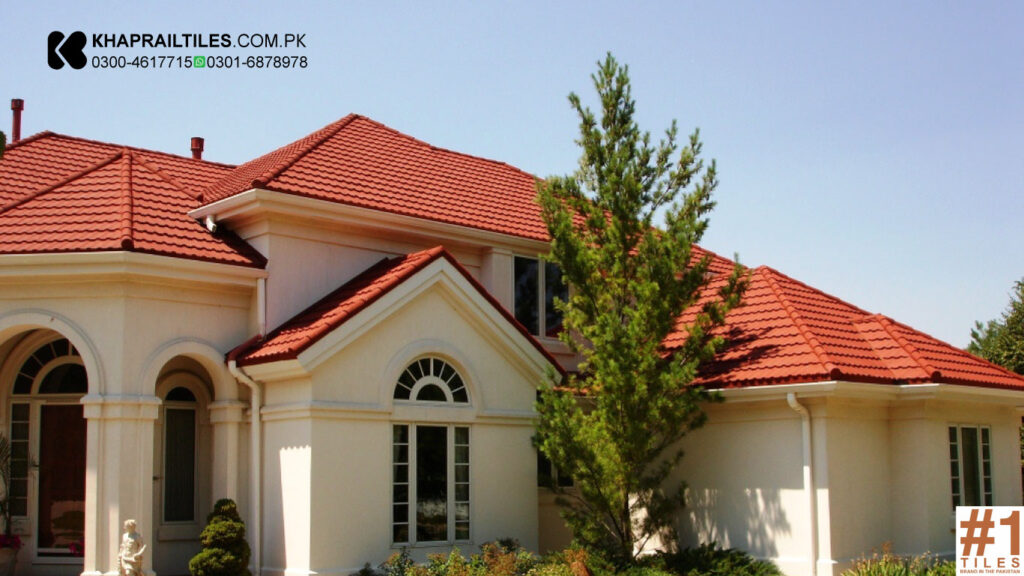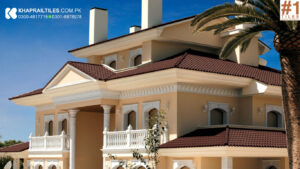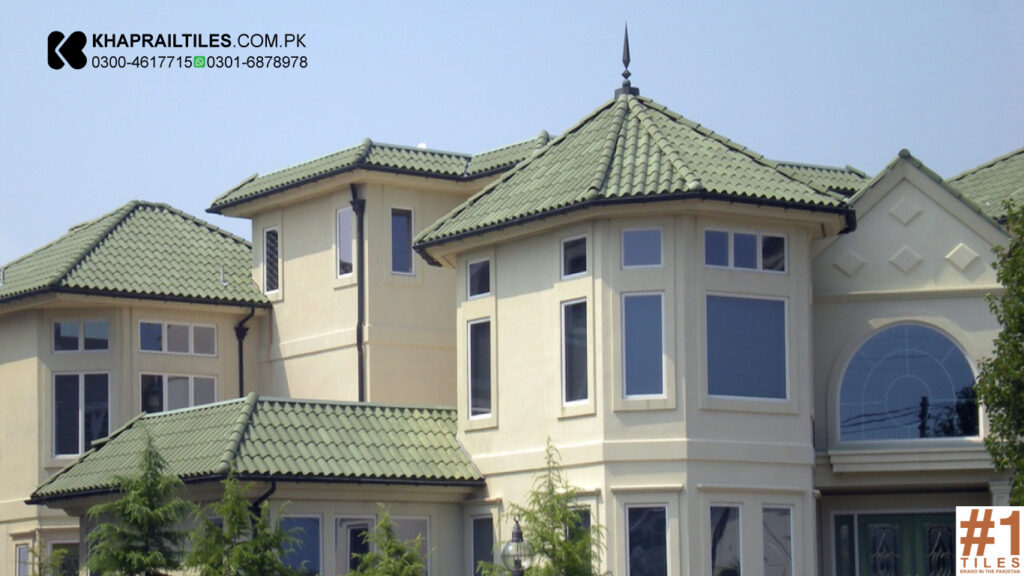Khaprail designs have become one of the most prominent and aesthetically appealing choices for homeowners seeking a perfect balance between durability, natural elegance, and architectural heritage. These traditional clay roof tiles, widely used across South Asia and especially in Pakistan, offer a combination of visual charm, weather resistance, and long-term economic value that make them superior to many modern roofing solutions. In this comprehensive guide, we explore the origins, types, advantages, design variations, and latest trends in Khaprail roofing that continue to shape residential and commercial projects today.
Understanding Khaprail – A Traditional Craft Evolving with Modern Architecture
Khaprail roofing originally began as a practical solution using locally sourced clay, molded and fired into durable tiles strong enough to withstand monsoon rains and extreme summer heat. Over centuries, the design evolved while maintaining its historic rustic appearance and outstanding insulation properties. Today, Khaprail tiles are available in a wide range of shapes, finishes, and colors, making them adaptable to both traditional and contemporary construction styles.

Why Khaprail Roofing Stands Out – Key Features and Benefits
Khaprail roofing continues to gain immense popularity due to a remarkable range of benefits:
1. Exceptional Durability
Made from high-strength clay and kiln-fired under controlled conditions, Khaprail tiles can last for decades even in harsh climates. They withstand:
-
Heat and UV exposure
-
Heavy rainfall
-
Frost
-
Saline coastal environments
Their natural structural strength ensures that well-installed Khaprail roofs deliver long-term performance with minimal maintenance.
2. Natural Temperature Control
One of the most valuable features of Khaprail tiles is their excellent thermal insulation. They trap less heat and maintain cooler indoor environments, reducing reliance on artificial cooling systems. This makes them an ideal choice for:
-
Homes in hot climates
-
Farmhouses
-
Resorts
-
Heritage-style constructions
3. Weather Resistance
Due to their high density and water-resistant properties, Khaprail tiles provide outstanding protection against:
-
Heavy monsoon rain
-
Cracks due to temperature fluctuations
-
Mold and dampness
This makes them particularly effective for structures in regions with seasonal weather variation.
4. Environmentally Friendly
Khaprail tiles are produced using natural clay, which makes them:
-
Non-toxic
-
Biodegradable
-
Sustainable
Unlike artificial roofing materials, they do not emit harmful chemicals during production or installation.
5. Elegant and Everlasting Aesthetic Appeal
Their classic rustic and earthy tones add a timeless charm, enhancing the architectural beauty of any building. Whether used for modern villas or heritage constructions, Khaprail roofs add a unique visual identity.
Popular Types of Khaprail Designs in Modern Architecture
With growing demand, manufacturers now offer multiple design variations, expanding both functionality and creativity in roofing and decorative applications.
1. Traditional Barrel or Curved Khaprail
The curved design is one of the earliest and most recognized styles. Its interlocking shape allows water to slide off efficiently, making it especially suitable for areas with heavy seasonal rainfall.
2. Flat Khaprail Tiles
Flat-profile tiles deliver a modern aesthetic with clean lines. These tiles are commonly used in:
-
Contemporary villas
-
Commercial buildings
-
Modern housing societies
Their sleek appearance offers a refined architectural look without losing the natural appeal of clay roofing.
3. Interlocking Khaprail
Engineered for easy installation, interlocking tiles provide tightly sealed roofing, minimizing the chances of leakage. They are preferred for large projects where installation time and weather protection are crucial.
4. Decorative Khaprail for Facades and Walls
Beyond roofing, Khaprail is now commonly used in:
-
Exterior feature walls
-
Boundaries
-
Fireplaces
-
Accent architectural panels
The combination of clay texture and custom shapes allows designers to create visually rich architectural elements.
Top Color and Finish Options in Khaprail Designs
Modern production techniques allow Khaprail to be manufactured in a wide range of finishes, including:
-
Natural Terracotta
-
Deep Red
-
Brown Clay
-
Black Antique
-
Wood-effect textures
-
Stone-finish variants
These options help architects blend structures with local landscapes, nature-focused designs, or contemporary urban environments.
Enhancing Building Value with Khaprail Roofing
Investing in high-quality Khaprail tiles offers long-term benefits that go beyond aesthetic appeal:
Higher Market Value
Properties featuring Khaprail roofing often achieve higher resale prices due to their durability and architectural charm.
Lower Maintenance Costs
Well-installed tiles require minimal upkeep compared to metal and concrete roofing, leading to significant cost savings over time.
Better Insulation Efficiency
Reduced heat transfer leads to energy savings and improved indoor comfort, especially in climates with extreme summers.
Installation Tips for Maximum Performance and Longevity
Proper installation ensures optimum results. When installing Khaprail tiles:
-
Choose experienced craftsmen familiar with natural clay roofing
-
Ensure wooden or steel trusses are properly aligned
-
Allow sufficient slope for quick rainwater runoff
-
Use high-quality waterproof underlayment
-
Avoid excessive use of cement, which affects ventilation
Correct installation enhances roof life and reduces long-term maintenance needs.
Modern Applications Beyond Traditional Roofing
Khaprail has expanded into many creative architectural uses:
-
Garden gazebos and pavilions
-
Pergola roofing
-
Exterior wall cladding
-
Restaurant and resort exteriors
-
Cultural monuments and restoration projects
Designers prefer them for their natural look, temperature control, and distinctive texture.
Why Khaprail Remains a Top Choice in Pakistan and Beyond
From heritage mansions to high-end luxury homes, Khaprail designs remain relevant because they:
-
Provide unmatched natural beauty
-
Meet performance standards for long-term roofing
-
Align with sustainable construction methods
-
Offer design versatility unmatched by synthetic materials
Their role in modern architecture continues to grow as homeowners and designers prioritize environmentally responsible and visually impactful construction.
Conclusion
Khaprail designs represent a perfect blend of tradition, sustainability, and modern architectural innovation. Their timeless appeal, proven performance, and diverse application possibilities make them one of the most valuable roofing and cladding solutions available today. Whether used in heritage renovations, farmhouse construction, or luxury villa exteriors, Khaprail tiles enhance structural value and visual excellence, ensuring a premium living experience for decades.





